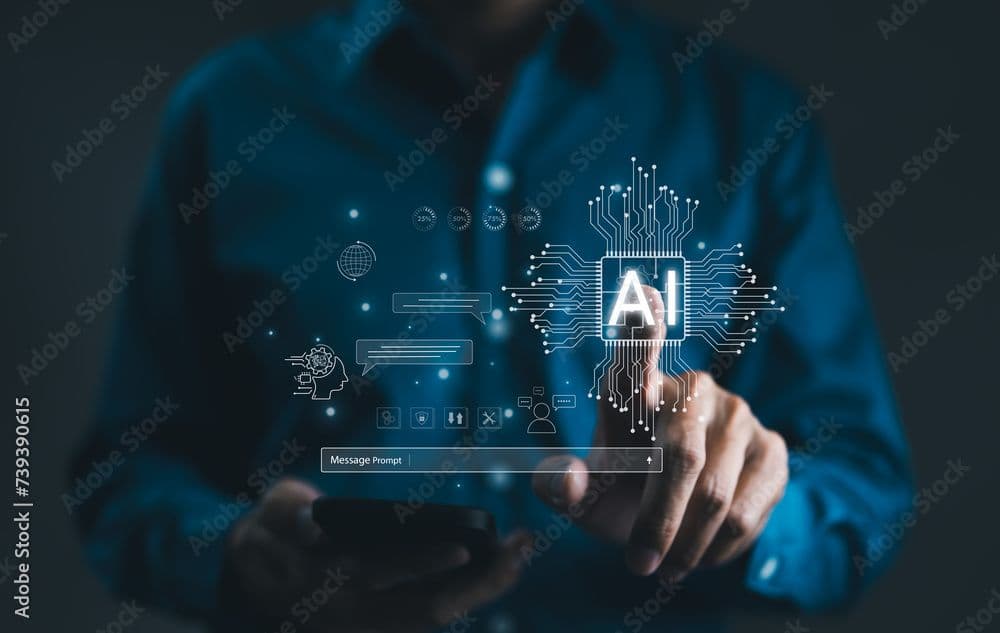AI and IoT

Combining AI with IoT: A New Era of Smart Technology
In recent years, the fields of Artificial Intelligence (AI) and the Internet of Things (IoT) have independently transformed the way we live, work, and interact with technology. However, when combined, these two powerful technologies unlock a whole new world of possibilities. The integration of AI with IoT has paved the way for the development of smart technologies that can learn from their environment, make decisions, and automate processes without human intervention. This fusion is creating a new era of intelligent systems that not only respond to real-time data but also predict future trends, optimize operations, and improve user experiences across various industries. In this blog, we will explore how AI and IoT complement each other, the impact of their combination on various sectors, and the future potential of this powerful synergy.
The Internet of Things (IoT) refers to the vast network of interconnected devices that collect, exchange, and transmit data over the internet. These devices, which include everything from smart thermostats and wearable health trackers to connected cars and industrial machines, generate massive amounts of data. On the other hand, Artificial Intelligence (AI) is responsible for processing and analyzing this data to extract meaningful insights, make predictions, and enable autonomous decision-making. When IoT devices are equipped with AI, they become intelligent systems capable of interpreting the data they collect and taking action based on that information. For example, in a smart home, an IoT-enabled thermostat can not only monitor the temperature but also learn the user’s preferences over time and adjust the heating or cooling automatically. By leveraging machine learning algorithms, the system can anticipate future temperature changes and optimize energy consumption, saving both energy and cost.
The combination of AI and IoT is having a profound impact on various industries. In healthcare, for example, IoT-enabled devices such as wearable health monitors can track real-time data, including heart rate, blood pressure, and activity levels. With AI, this data can be analyzed to detect early signs of health issues or predict potential medical conditions. AI can also automate alerts to healthcare providers when an anomaly is detected, allowing for faster interventions and personalized treatment plans. Similarly, in smart cities, IoT devices collect data on everything from traffic patterns and air quality to waste management and energy consumption. By applying AI algorithms to this data, city planners can optimize public services, reduce energy waste, and enhance the quality of life for residents. For instance, AI can help regulate traffic lights to improve traffic flow or predict power outages before they happen, ensuring a more efficient and sustainable urban environment.
Another key area where AI and IoT are making a significant impact is in manufacturing. The concept of a smart factory is becoming a reality thanks to the integration of IoT devices with AI-powered analytics. In these factories, IoT sensors monitor the health and performance of machines in real-time, collecting data on everything from temperature and vibration to machine speed and efficiency. AI systems can then analyze this data to detect potential issues, such as worn-out components or performance degradation, before they lead to costly breakdowns. This proactive maintenance approach, known as predictive maintenance, not only extends the lifespan of equipment but also reduces downtime and operational costs. AI-powered systems can also optimize production schedules, streamline supply chains, and improve quality control by analyzing large volumes of data to identify patterns and inefficiencies.
Looking ahead, the combination of AI and IoT holds immense potential to further revolutionize our world. As both technologies continue to evolve, their capabilities will only expand. For instance, AI-powered IoT systems will become even more autonomous, with the ability to make complex decisions and take actions with minimal human input. This could lead to fully automated homes, workplaces, and industries, where machines not only perform tasks but also learn from their environment to improve performance over time. In addition, the integration of 5G networks with AI and IoT will enable faster and more reliable communication between devices, leading to real-time decision-making and enhanced capabilities in areas like autonomous vehicles, smart grids, and supply chain management. Furthermore, advancements in edge computing will allow AI to process data closer to where it is generated, reducing latency and improving the responsiveness of IoT devices.
In conclusion, the convergence of AI and IoT is ushering in a new era of smart technology that is transforming the way we live, work, and interact with the world around us. By combining AI’s ability to process and analyze large volumes of data with IoT’s vast network of interconnected devices, we are creating intelligent systems that can make decisions, optimize operations, and improve user experiences in ways that were once unimaginable. From healthcare and smart cities to manufacturing and beyond, the impact of AI and IoT is already being felt across industries, and the future promises even greater innovations. As these technologies continue to evolve and mature, the possibilities for creating a smarter, more efficient, and more connected world are limitless.
,